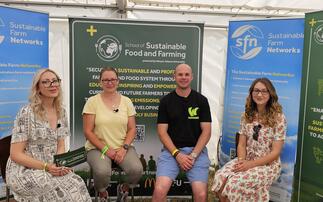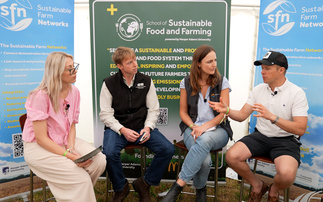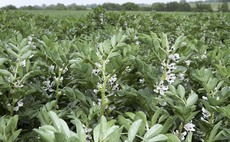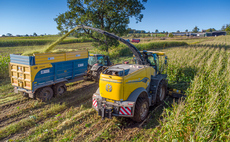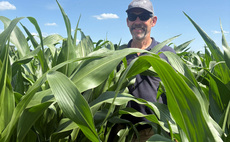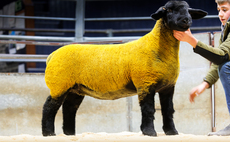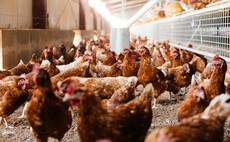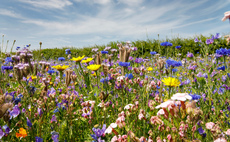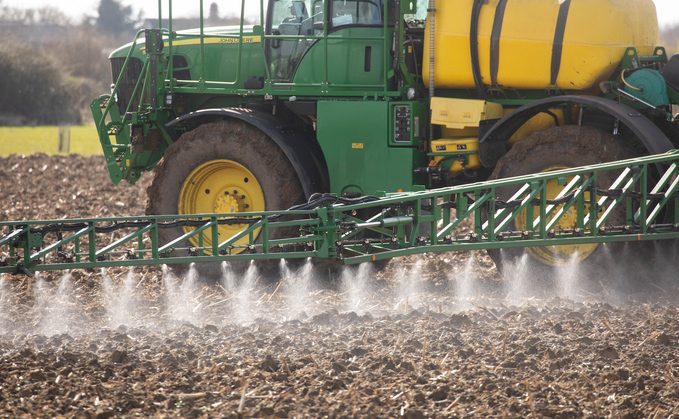
Matt Siggs says glyphosate needs to be treated in the same way as all other pesticide applications made on-farm
After what has been an exceptionally tricky harvest, growers are seeking to deplete seedbanks of annual grasses, including black-grass, wild oats, bromes and Italian ryegrass, before they plant winter crops.
With these grass-weeds continuing to emerge in wet conditions, it is a priority to get fields sprayed off before the drill, ready to take advantage of any window which opens up for drilling.
As the past few seasons have demonstrated, the single most effective intervention in reducing populations emerging in-crop comes from delaying drilling, provided the drill is followed by a robust pre-emergence spray within 48 hours of drilling.
Matt Siggs, commercial technical manager with Bayer Crop Science, urges growers to adhere to the stewardship guidelines set out in the Weed Resistance Action Group guidelines to get the best from the product and avoid glyphosate resistance developing.
Timing
Timing is important - Mr Siggs advises taking the time to get weeds and cereal volunteers to establish early and evenly to get the best possible control.
He says: "Running across the stubbles with a straw rake will stimulate weeds early and hopefully even germination. Leaving the weeds to grow for a bit allows more of the target plants to emerge so they are all at a similar growth stage at application."
Sub-optimal If weeds are sprayed too early, control will be sub-optimal as the flush will continue to emerge post-application.
Mr Siggs urges patience and the monitoring of stubbles so glyphosate is applied when most weed targets are at the two- to three-leaf stage. If unsure, agronomy advice should be sought.
Mr Siggs says: "Glyphosate is a very important herbicide and needs to be treated in the same way as all other pesticide applications made on-farm."
Dose rates and target weed growth stages are critical for glyphosate stewardship.
Weeds should be sprayed with a minimum of 540g/ hectare of glyphosate, but growth stage monitoring is key and, if the target plants have started to tiller, Mr Siggs advises increasing the rate to 720g/ha and above to ensure a lethal dose is applied.
He says: "Sub-optimal application is the thin end of the wedge for creating resistance." One of the most important considerations for resistance management is avoiding too many repeat applications.
Best results
For best results, Mr Siggs suggests a maximum of two applications for stale seedbeds, spaced apart with monitoring of the level of success.
Between applications, use cultivation and consolidation to generate the next flush and act as a level of mechanical control if there are any survivors, he adds.
Good straw cover, if it is being chopped and spread, can also provide adequate darkness to trigger seedling growth.
Leaving soil undisturbed is best when soil conditions are dry, to retain moisture, although this is perhaps why growers did not see such good levels of weed control last autumn as there was no opportunity to encourage germination and depletion of weed seed levels prior to drilling.
This highlights the case for cultivating early when soil moisture is present, says Mr Siggs, as this can trigger germination of freshly shed seed on the soil surface and help chit older seed, thus depleting the seed bank.
The decision on when to make the two applications of glyphosate is dependent on a number of factors, such as the weed species present, their growth stage and the cultivation and drilling techniques which suit the field.

Pre-planting application
If a pre-planting application is missed directly before drilling, growers have the option to make use of the post-plant pre-emergence application approval - always check the label - and include glyphosate with the pre-emergence, but this does carry a risk of mistiming the application.
Since only 540g glyphosate can be legally included at this timing, it may not be appropriate for control of large weeds at risk of transplanting.
It is more suited to control of small weeds in the event the pre-emergence is unavoidably delayed, says Mr Siggs.
He says: "Beware though that the window can be short with this approach and there is a risk of hitting the newly emerged crop, so always take agronomic advice."
As glyphosate is often applied to stubbles or bare cultivated ground, complacency can creep into spraying operations, but operators should treat the product as they would an expensive pre-emergence herbicide.
This means reducing forward speed, maintaining optimum boom height and working with the right nozzles at the correct pressure to deliver a medium-coarse droplet in a water volume of 100-150 litres/ha, ideal for glyphosate and helping to minimise drift.
Sprayer consultant Tom Robinson has been conducting independent research for Bayer to examine these points.
Nozzle type
Last year nozzle type was assessed.
This year nozzles again came under scrutiny, but also their effectiveness at two different forward speeds. Applications were carried out with a farm sprayer in May on a crop of spring wheat at a concentration of 1.5 litres/ha in 100 litres/ha of water at speeds of 9kph and 13.5kph.
The nozzles used were a Lechler IDTA, Hypro Guardian Air, 3D and Fan Jet.
Measurements taken included percentage of control achieved, the speed of activity and the distance and area of spray drift. At 99.9%, weed control in all plots was excellent, says Mr Robinson.
Mr Robinson says: "The differences measured were in the maximum width of the six-metre swath. The cleanliness of cut-off was also assessed."
The trial produced some interesting results. The greatest throw was from the Fan Jet at 13.5kph.
The Guardian Air had the narrowest width and the best cut-off, closely followed by the IDTA.
Mr Robinson says: "I feel the drops from the IDTA, which are the largest, are probably thrown further than the smaller drops from the Guardian Air.
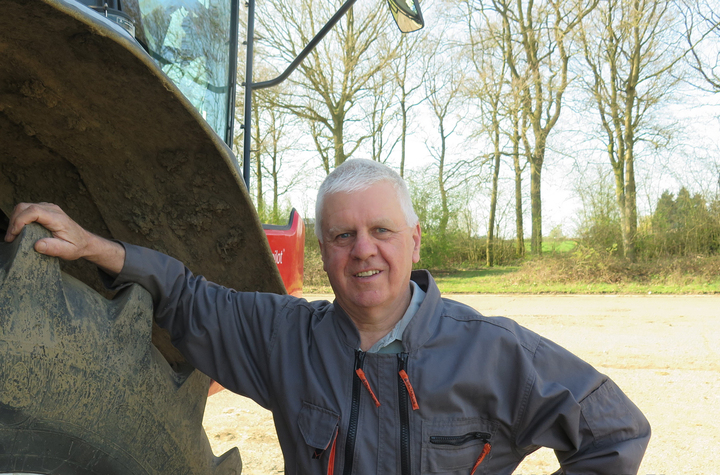
Cleanest cut-off
"The Guardian Air had the cleanest cut-off, followed by the IDTA and 3D. The Fan jet was the poorest performer."
During speed tests, the performance of the IDTA and Guardian Air was not only good but the same at both 9kph and 13.5kph.
The 3D and the Fan Jet were more variable, says Mr Robinson.
He says: "It was noticeable that the fine spray from the Fan Jet was particularly susceptible to turbulence generated by the passing sprayer."
When spraying larger weeds, the trial showed that when a higher forward speed is required to optimise timing, the operator should fit either a Hypro Guardian Air, or a Lechler IDTA.
Nozzle height was also examined. Although the guidelines are to spray at 50cm above the top of the target, growers often exceed that.
As expected, the trial showed that weed control was more effective at 50cm when compared to application at 100cm.
To ensure glyphosate is applied at the correct height, Mr Robinson says a simple approach involving a cable tie can be effective.
He says: "My favourite approach is to have a big cable tie at the end of the boom, snipped off at 50cm below the sprayer boom."
It is essential that the boom is correctly mounted too, to stay in a horizontal position.
Mr Robinson says: "I see so many booms oscillating to the left and right and that has an enormous effect on where the spray goes.
"The product can land 10m off target, therefore it does not do as good a job."









